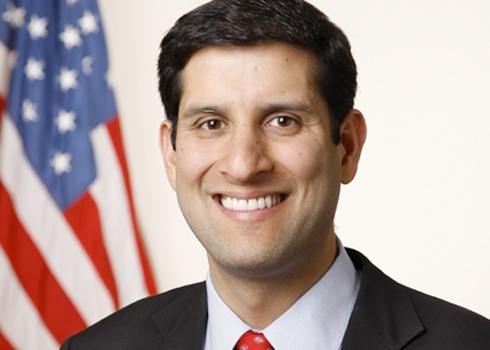The White House is pushing a new initiative that will strong-arm many agencies into adopting cloud computing. Proponents of the plan say that the move will enhance productivity and help keep budgets low in an era of austerity. Critics of the plan fear that government agencies who adopt cloud computing will put themselves at risk for security lapses.
Federal Chief Information Officer Vivek Kundra gave a presentation aimed at encouraging government agencies to adopt cloud computing at an Armed Forces Communications and Electronics Association panel discussion on February 25. According to Kundra, “We want to make sure the shift is disruptive. … We want the federal government to move away from asset ownership and shift to service provisioning.”
Full details of the plan, titled the Federal Cloud Computing Strategy, were released to the public last week.
As the cloud computing infrastructure develops, the federal government has no choice but to move in that direction, said Art Fritzson, a senior vice president at Booz Allen Hamilton who advises the government on IT issues. In an interview with TPM, Fritzson said:
The federal government can’t afford not to be interested in cloud computing. Virtualizing agency data centers, and consolidating data centers and operations provides an incredibly compelling economic argument. We currently have an unsustainable situation in trying to maintain the sprawling IT infrastructure. So the primary interest today is driven by economics; going forward it will be the increased security offered by the cloud.
Jay Chaudhry, CEO of cloud security provider Zscaler, also noted that switching to cloud services could enhance federal email security:
Traditional on-premise mail systems typically have less redundancy than a well-designed cloud solution, simply based on cost and feasibility  cloud providers have multiple clouds, each with multiple data centers. Even the largest enterprises or government agencies typically only have one or two primary mail stores, and a single failover for each.
The Homeland Security Department is the highest-profile government entity to have adopted cloud computing so far. Officials at Homeland Security have provisioned a private cloud, reportedly going online in fiscal year 2012, that will connect more than 100,000 email addresses at subdivisions that cover everyone from the Federal Emergency Management Agency to Customs and Border Protection.
Several other big-name government agencies are also joining in the switch. The General Services Administration is moving email services to the cloud, which they expect to save $15 million over the next five years. The Agriculture Department adopted cloud computing in late 2010 and migrated approximately 120,000 email addresses to the cloud. This IT change involved a lucrative $27 million contract for Dell and Microsoft. However, the GSA chose to partner with Unisys for their cloud project instead.
According to the Cloud Computing Strategy, “an estimated $20 billion of the Federal Government’s $80 billion in IT spending is a potential target for migration to cloud computing solutions.” Cloud projects at NASA and the U.S. Army — which, in the Army’s case, involved having recruiters conduct a considerable amount of work via Facebook — are also cited as examples of how the transition could aid productivity.






